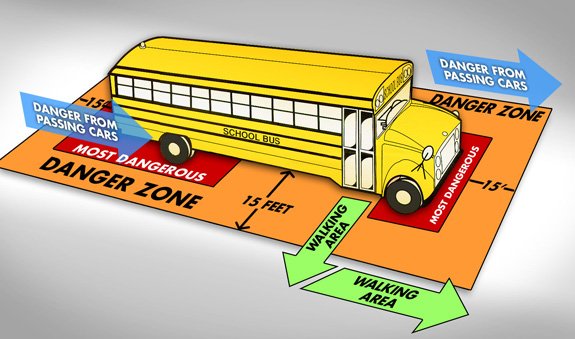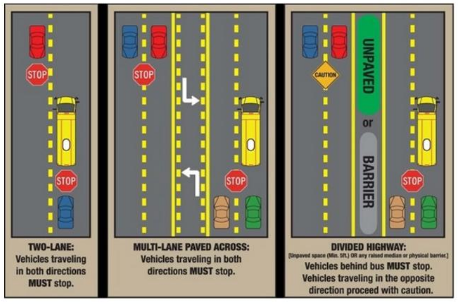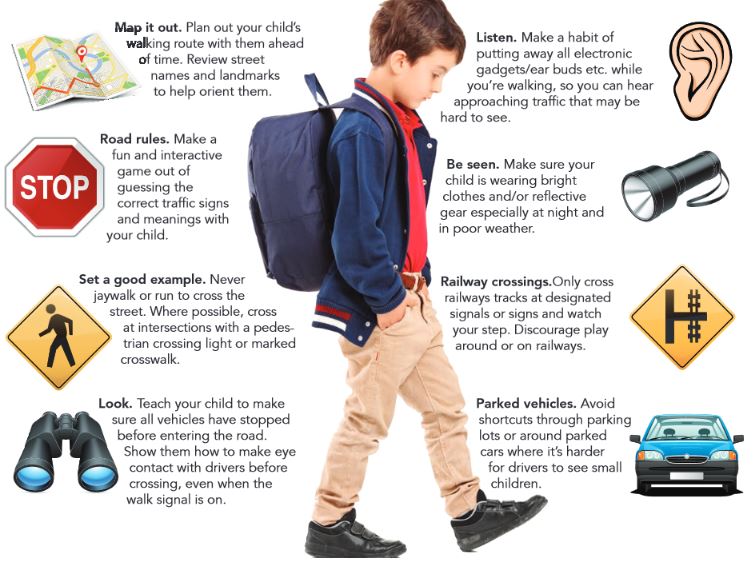As kids all across the DFW metroplex kick off the start of the new year, MedStar highlights the following tips from the National Safety Council for kids and parents to help avoid preventable injuries and prepare for any medical emergencies that may arise at school.
MedStar experienced a significant jump in pediatric auto-pedestrian crashes last year as school started, responding to 13 pediatric auto-pedestrian between August 20th and September 19th compared to just 5 in July!
Emily Hill, a MedStar Paramedic Supervisor states “A pediatric auto-pedestrian crash is one of our most heart-breaking calls. Kids are very fragile and these crashes too often have devastating outcomes”. “Drivers, please stay alert, and parents, teach your kids how to be careful while going to or from school”, explains Hill.
We encourage our community to heed these tips to help prevent a repeat of last year.
RIDING THE SCHOOL BUS
School buses are the safest way for children to travel to and from school. However, there are dangers when children are boarding and leaving the bus. Over the last decade, nearly two-thirds of school-age pedestrians fatally injured in school transportation-related crashes were struck by school buses or other vehicles when getting on or off a school bus. Teach your child to always play it SAFE:
- Stay five steps away from the curb.
- Always wait for the bus driver to tell you when to board.
- Face forward after finding a seat on the bus.
- Exit the bus when it stops, look left-right-left, and take five steps away from the bus toward the curb.
WALKING
Walking to school is great exercise and gets kids ready to face their studies. Children under 10 years old should be accompanied by an adult or someone who will make sure they walk safely. Teach your child to always
- Use the sidewalk whenever possible, and if there isn’t a sidewalk, walk on the edge of the street facing traffic.
- Focus when walking near traffic – this is no time for horseplay.
- Use crosswalks whenever they are available to cross the street.
- Look left-right-left before crossing any street.
DROPPING OFF
Schools often have very specific drop-off procedures for the school year. Make sure you know them for the safety of all kids. The following apply to all school zones:
- Don’t double park; it blocks visibility for other children and vehicles
- Don’t load or unload children across the street from the school
- Carpool to reduce the number of vehicles at the school
SHARING THE ROAD WITH YOUNG PEDESTRIANS
According to research by the National Safety Council, most of the children who lose their lives in bus-related incidents are 4 to 7 years old, and they’re walking. They are hit by the bus, or by a motorist illegally passing a stopped bus.
A few precautions go a long way toward keeping children safe:
- Don’t block the crosswalk when stopped at a red light or waiting to make a turn, forcing pedestrians to go around you; this could put them in the path of moving traffic
- In a school zone when flashers are blinking, stop and yield to pedestrians crossing the crosswalk or intersection
- Always stop for a school patrol officer or crossing guard holding up a stop sign
- Take extra care to look out for children in school zones, near playgrounds and parks, and in all residential areas
- Don’t honk or rev your engine to scare a pedestrian, even if you have the right of way
- Never pass a vehicle stopped for pedestrians
- Always use extreme caution to avoid striking pedestrians wherever they may be, no matter who has the right of way
SHARING THE ROAD WITH SCHOOL BUSES
If you’re driving behind a bus, allow a greater following distance than if you were driving behind a car. It will give you more time to stop once the yellow lights start flashing. It is illegal in all 50 states to pass a school bus that is stopped to load or unload children.
- Never pass a bus from behind – or from either direction if you’re on an undivided road – if it is stopped to load or unload children
- If the yellow or red lights are flashing and the stop arm is extended, traffic must stop
- The area 10 feet around a school bus is the most dangerous for children; stop far enough back to allow them space to safely enter and exit the bus
- Be alert; children often are unpredictable, and they tend to ignore hazards and take risks
SHARING THE ROAD WITH BICYCLISTS
On most roads, bicyclists have the same rights and responsibilities as vehicles, but bikes can be hard to see. Children riding bikes create special problems for drivers because usually they are not able to properly determine traffic conditions. The most common cause of collision is a driver turning left in front of a bicyclist.
- When passing a bicyclist, proceed in the same direction slowly, and leave 3 feet between your car and the cyclist
- When turning left and a bicyclist is approaching in the opposite direction, wait for the rider to pass
- If you’re turning right and a bicyclists is approaching from behind on the right, let the rider go through the intersection first, and always use your turn signals
- Watch for bike riders turning in front of you without looking or signaling; children especially have a tendency to do this
- Be extra vigilant in school zones and residential neighborhoods
- Watch for bikes coming from driveways or behind parked cars
- Check side mirrors before opening your door
By exercising a little extra care and caution, drivers and pedestrians can co-exist safely as we start the school year!



https://www.nsc.org/home-safety/seasonal-safety/back-to-school/drivers





